Sanchi is a Buddhist complex, famous for its Great Stupa, on a hilltop at Sanchi Town in Raisen District of the State of Madhya Pradesh, India. It is located, about 23 kilometers from Raisen town, district headquarter and 46 kilometres (29 mi) north-east of Bhopal, capital of Madhya Pradesh.
The Great Stupa at Sanchi is one of the oldest stone structures in India, and an important monument of Indian Architecture. It was originally commissioned by the Mauryan emperor Ashoka the Great in the 3rd century BCE. Its nucleus was a simple hemispherical brick structure built over the relics of the Buddha. It was crowned by the chatra, a parasol-like structure symbolising high rank, which was intended to honour and shelter the relics. The original construction work of this stupa was overseen by Ashoka, whose wife Devi was the daughter of a merchant of nearby Vidisha. Sanchi was also her birthplace as well as the venue of her and Ashoka’s wedding. In the 1st century BCE, four elaborately carved toranas (ornamental gateways) and a balustrade encircling the entire structure were added. The Sanchi Stupa built during the Mauryan period was made of bricks. The composite flourished until the 11th century.
Sanchi is the center of a region with a number of stupas, all within a few miles of Sanchi, including Satdhara (9 km to the W of Sanchi, 40 stupas, the Relics of Sariputra and Mahamoggallana, now enshrined in the new Vihara, were unearthed there), Bhojpur (also called Morel Khurd, a fortified hilltop with 60 stupas) and Andher (respectively 11 km and 17 km SE of Sanchi), as well as Sonari (10 km SW of Sanchi). Further south, about 100 km away, is Saru Maru. Bharhut is 300 km to the northeast.
Sanchi Stupa is depicted on the reverse side of the Indian currency note of ₹200 to signify its importance to Indian cultural heritage.
Transport
The nearest airport is Bhopal. Trains are available from Bhopal and Rani Kamlapati to Sanchi railway station. Buses are available from Bhopal and Vidisha.
Overview
The monuments at Sanchi today comprise a series of Buddhist monuments starting from the Mauryan Empire period (3rd century BCE), continuing with the Gupta Empire period (5th century CE), and ending around the 12th century CE. It is probably the best preserved group of Buddhist monuments in India. The oldest, and also the largest monument, is the Great Stupa also called Stupa No. 1, initially built under the Mauryans, and adorned with one of the Pillars of Ashoka. During the following centuries, especially under the Shungas and the Satavahanas, the Great Stupa was enlarged and decorated with gates and railings, and smaller stupas were also built in the vicinity, especially Stupa No.2, and Stupa No.3.
Simultaneously, various temple structures were also built, down to the Gupta Empire period and later. Altogether, Sanchi encompasses most of the evolutions of ancient Indian architecture and ancient Buddhist architecture in India, from the early stages of Buddhism and its first artistic expression, to the decline of the religion in the subcontinent.


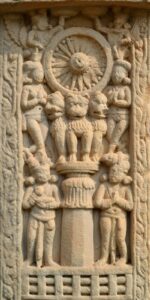
The capital of the Sanchi pillar of Ashoka, as discovered (left), and simulation of original appearance by Percy Brown (center). It is very similar to the Lion Capital of Ashoka at Sarnath, except for the abacus, here adorned with flame palmettes and facing geese, 250 BCE. Sanchi Archaeological Museum. To the right: depiction of the four lions capital surmounted by a Wheel of Law at Sanchi, Satavahana period, 1st century CE, South gateway of stupa 3.

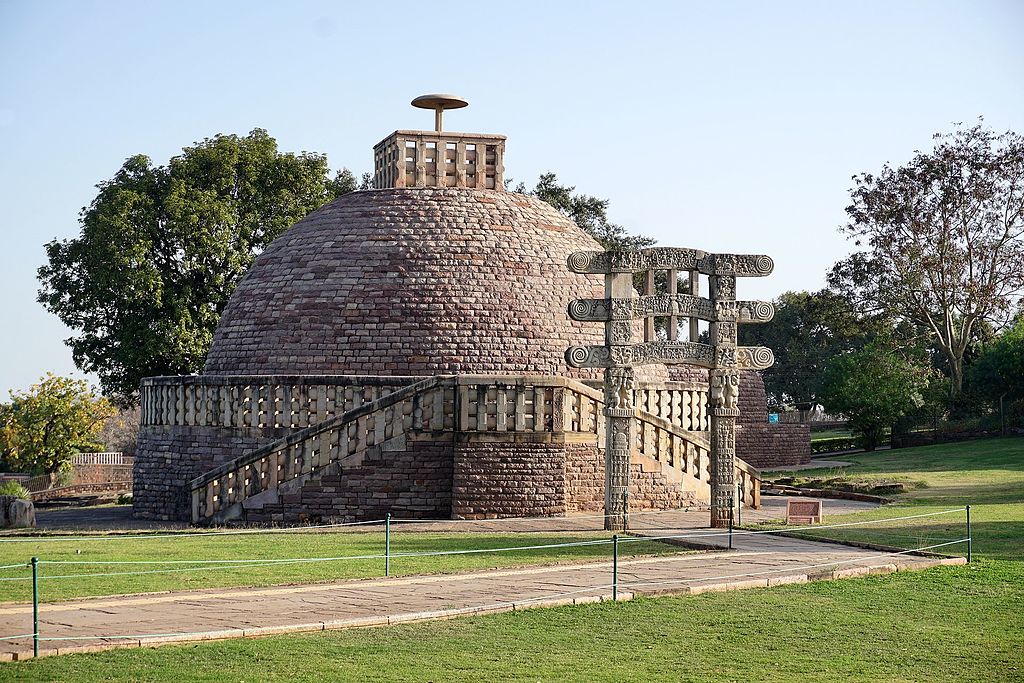
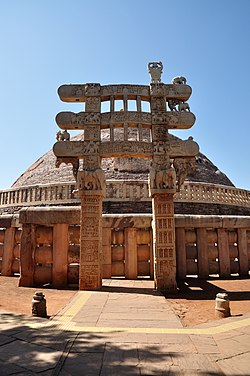


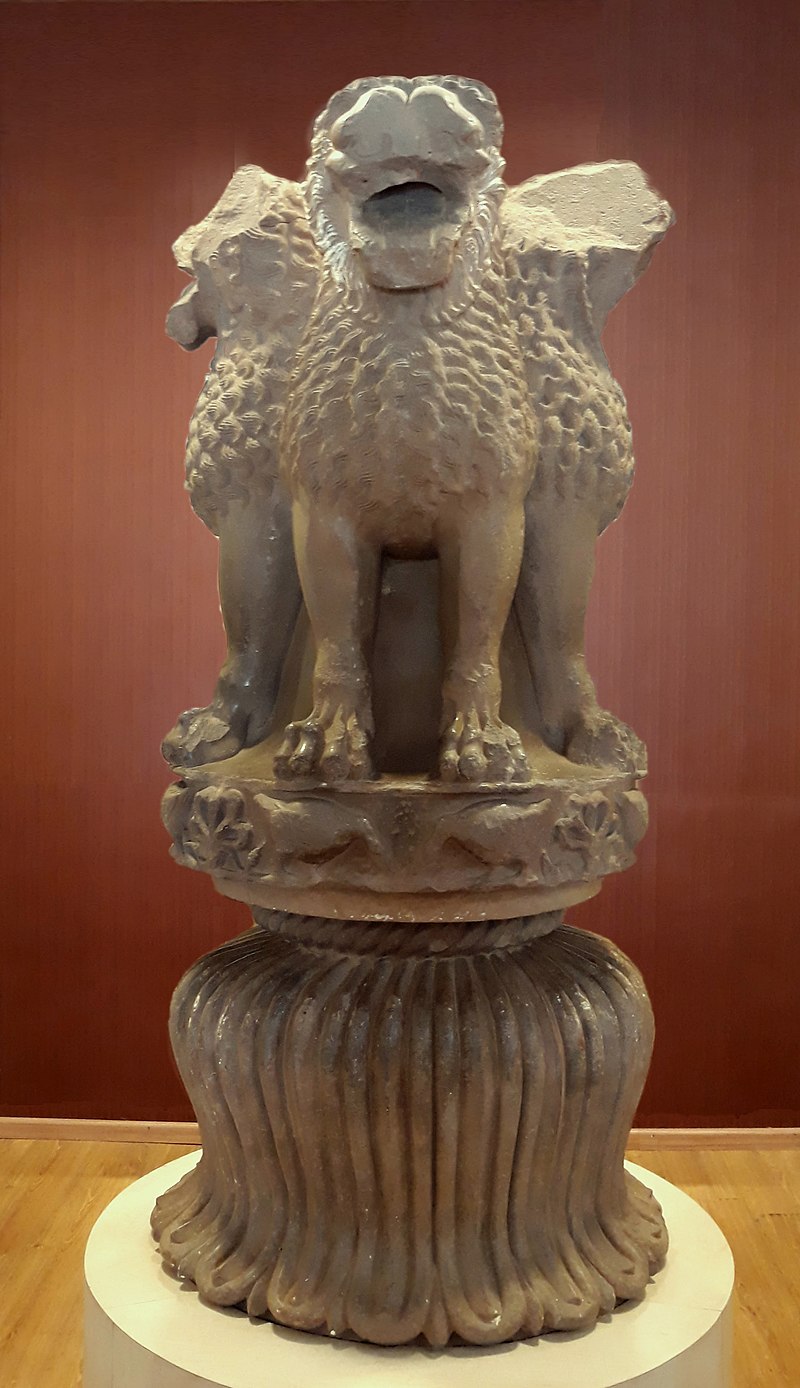




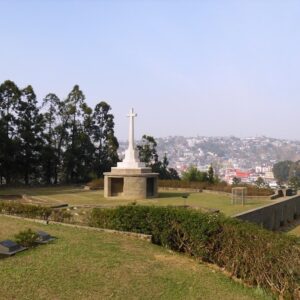





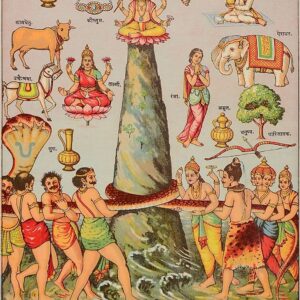


Reviews
There are no reviews yet